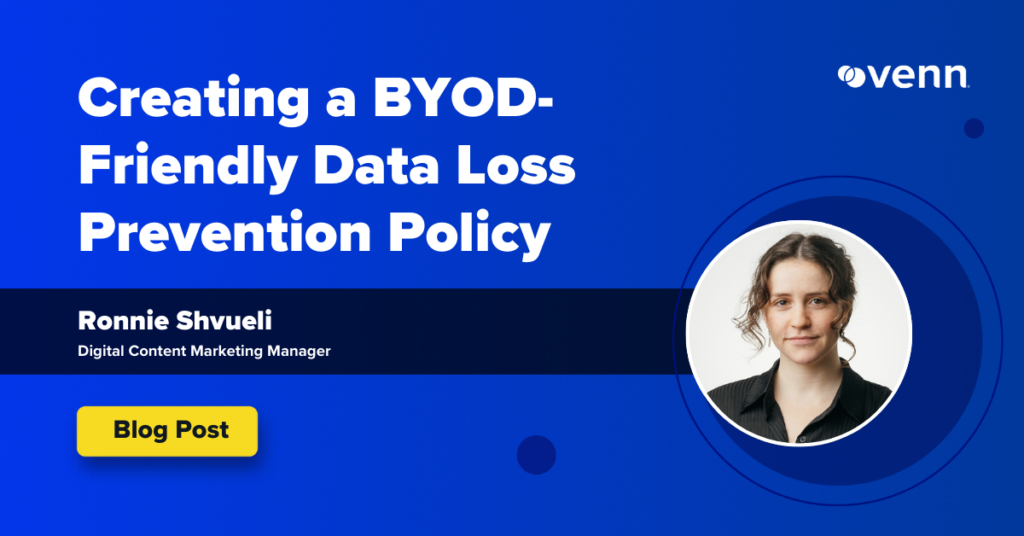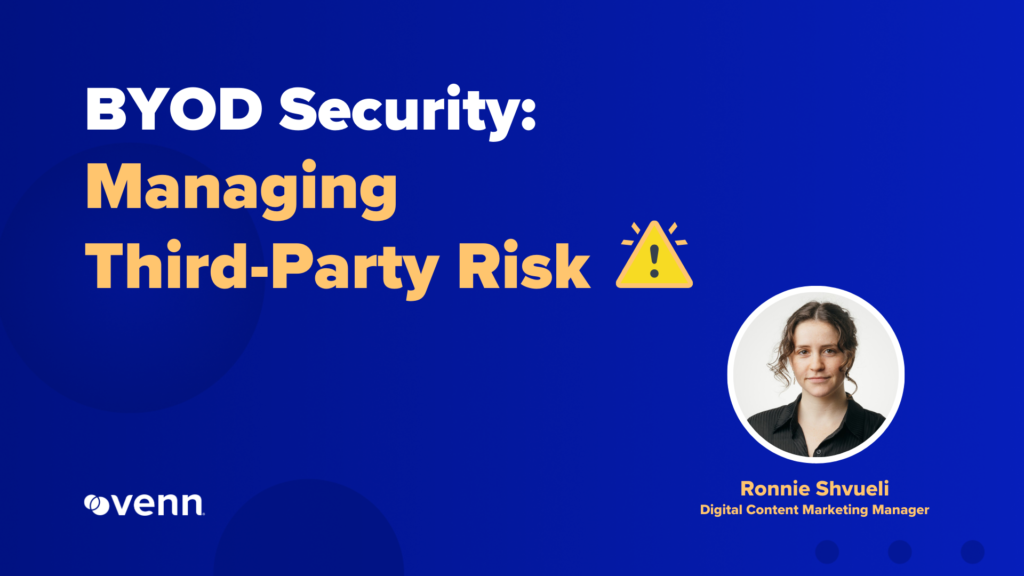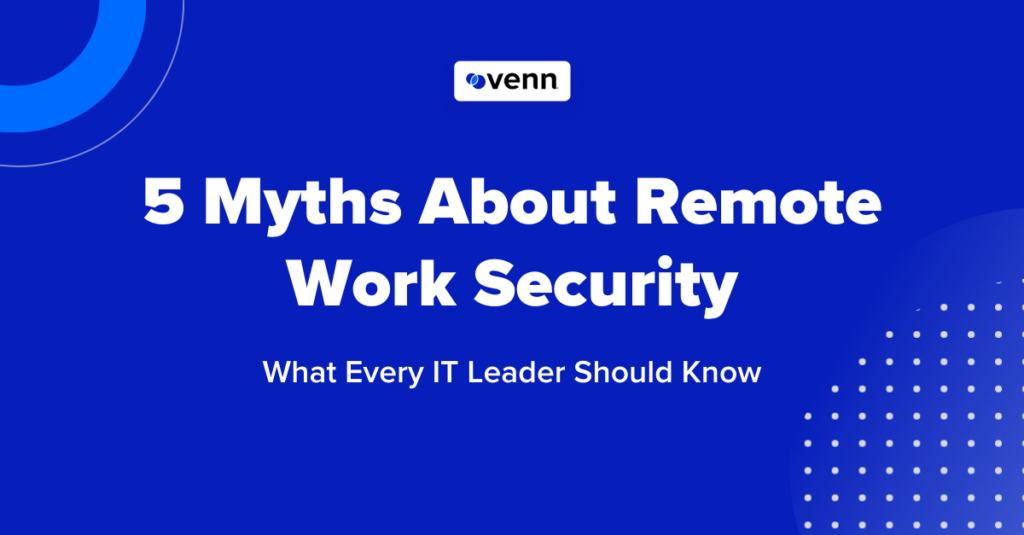Featured Resources
How to Create a BYOD-Friendly Data Loss Prevention Policy


March 13, 2025
Blog
How to Create a BYOD-Friendly Data Loss Prevention Policy
Creating and implementing a data loss prevention policy is a critical security measure for organizations today. But many DLP policies prioritize security at the cost of usability, which leads to employee frustration and, in turn, security workarounds–ultimately increasing the risk of data leaks and shadow IT. Achieving this balance is challenging, as implementing DLP policies […]
BYOD Security: Managing Third-Party Risk


February 18, 2025
Blog
BYOD Security: Managing Third-Party Risk
How a Call Center-Driven Healthcare Company is Tackling BYOD and Operational Efficiency


December 17, 2024
Blog
How a Call Center-Driven Healthcare Company is Tackling BYOD and Operational Efficiency
5 Myths About Remote Work Security: What Every IT Leader Should Know


June 12, 2024
Blog
5 Myths About Remote Work Security: What Every IT Leader Should Know
Unified Endpoint Management: 5 Key Features, Pros and Cons


Knowledge Article
Unified Endpoint Management: 5 Key Features, Pros and Cons
What Is Unified Endpoint Management (UEM)? Unified Endpoint Management (UEM) is a security and management approach that allows IT teams to control and secure all types of endpoints, including mobile devices, desktops, laptops, and Internet of Things (IoT) devices, from a single console. UEM enables centralized deployment, security policy enforcement, application delivery, and real-time monitoring. […]
AWS Workspace: 2026 Guide to Features, Pricing, and Alternatives


Knowledge Article
AWS Workspace: 2026 Guide to Features, Pricing, and Alternatives
What Is Amazon WorkSpaces? AWS WorkSpaces is a managed cloud-based desktop-as-a-service (DaaS) that provides users with virtual, cloud-hosted Windows or Amazon Linux 2 desktops. It allows for quick provisioning and scaling of desktops for workers, with flexible monthly or hourly billing options. The service helps reduce the complexity of managing physical hardware, OS patching, and […]
Why California’s ABC Test Makes Issuing Laptops to Contractors a Growing Liability — And How Blue Border™ Solves It


November 24, 2025
Blog
Why California’s ABC Test Makes Issuing Laptops to Contractors a Growing Liability — And How Blue Border™ Solves It
Across California – and increasingly in other states with strict worker-classification rules – organizations are facing a new challenge: how do you secure work for contractors without exposing yourself to misclassification risk? Under California’s ABC Test, issuing company-managed laptops to independent contractors can undermine their classification and trigger steep compliance and financial consequences. Yet many […]
Intune MDM: Pros, Cons, and Top 8 Alternatives in 2025


Knowledge Article
Intune MDM: Pros, Cons, and Top 8 Alternatives in 2025
What Is Microsoft Intune MDM? Intune MDM is a cloud-based solution from Microsoft for managing and securing mobile devices, PCs, and other platforms like iOS, Android, and Windows. It allows IT administrators to enroll devices, configure settings, enforce security policies (like passcodes and encryption), manage apps, and protect corporate data from a central console. Intune […]
Best VDI Providers and Alternatives: Top 8 in 2026


Knowledge Article
Best VDI Providers and Alternatives: Top 8 in 2026
What Are Virtual Desktop Infrastructure (VDI) Providers? Virtual desktop infrastructure (VDI) providers deliver platforms that enable organizations to deploy and manage virtual desktops hosted on centralized servers or clouds. These providers supply the resources, software, and management tools required to provision, monitor, and secure employee desktops, offering an alternative to traditional desktop computing models. The […]
Best DaaS Providers and Alternatives: Top 7 in 2026


Knowledge Article
Best DaaS Providers and Alternatives: Top 7 in 2026
What Are Desktop-as-a-Service (DaaS) Providers? Desktop-as-a-Service (DaaS) providers host virtual desktops and applications in the cloud, allowing users to access them from various internet-connected devices. It is offered as a scalable, pay-as-you-go service. Major DaaS providers include Citrix and VMware (now Omnissa). DaaS providers offer: While DaaS centralizes desktop delivery, it introduces persistent issues related […]
Top 7 DaaS Solutions and Alternatives in 2026


Knowledge Article
Top 7 DaaS Solutions and Alternatives in 2026
What Are Desktop-as-a-Service (DaaS) Solutions? Desktop-as-a-Service (DaaS) delivers virtual desktops from a cloud provider’s infrastructure to user devices via the internet. All computing (processing, storage, and application execution) occurs in a remote data center, not on the user’s device. Users access these desktops using remote display protocols like RDP, PCoIP, or HDX. While DaaS removes […]
Best VDI Solutions: Top 8 to Know in 2026


Knowledge Article
Best VDI Solutions: Top 8 to Know in 2026
What Are Virtual Desktop Infrastructure (VDI) Solutions? VDI solutions provide virtual desktops hosted on a centralized server, allowing users to access them from any device over a network. Popular VDI providers include Citrix, Microsoft Azure Virtual Desktop, and Amazon WorkSpaces. How VDI solutions work: The VDI approach centralizes control and management, benefiting security and enabling […]
Top 10 Mobile Device Management Solutions and Alternatives in 2026


Knowledge Article
Top 10 Mobile Device Management Solutions and Alternatives in 2026
What Are Mobile Device Management (MDM) Solutions? Mobile Device Management (MDM) solutions are security and management software platforms that enable organizations to centrally monitor, secure, and enforce policies on mobile devices like smartphones, tablets, and laptops connecting to their network. By centralizing device administration, MDM solutions allow IT teams to protect sensitive corporate data, regardless […]